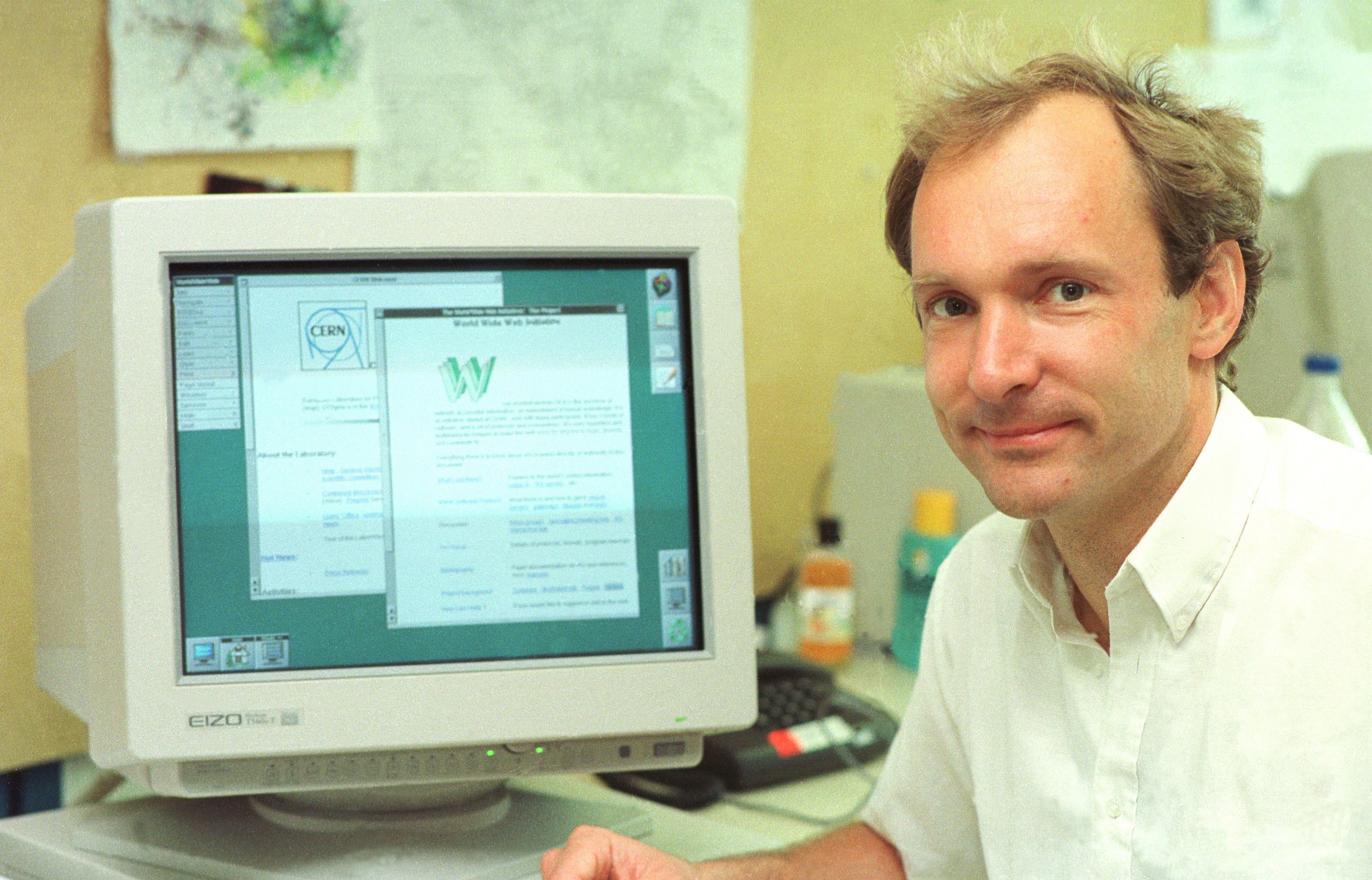Berners-Lee, Tim (1955-…), a British computer scientist, developed the World Wide Web. The World Wide Web is part of the Internet, the worldwide network of computers. It is called the Web for short. The Web allows computer users to compose and view “pages.” These pages may contain pictures, video, animation, and sound, in addition to text.

In 1980, Berners-Lee was working at the European Organization for Nuclear Research (CERN) near Geneva, Switzerland. He devised a system that linked words in one computer file to those in another. This technique is known as hypertext. About 1989, Berners-Lee conceived the World Wide Web. He initially thought of it as a way for physicists around the world to link their own documents to CERN computer files. He wrote the Web software in 1990. In 1991, the Web became part of the Internet. Berners-Lee created a coding system called HTML (H_yper_T_ext _M_arkup _L_anguage). This system describes how Web pages should appear when viewed using computer programs called _Web browsers. Berners-Lee also designed a uniform resource locator (URL). The URL is an addressing system that assigns each Web page a unique location. In addition, he devised HTTP (H_yper_Text _T_ransfer _P_rotocol). The protocol is a system for transferring documents between computers on the Web.
Berners-Lee was born on June 8, 1955, in London. He graduated from Oxford University with a degree in physics in 1976. Queen Elizabeth II knighted him in 2004, and he became Sir Tim Berners-Lee. Also in 2004, Berners-Lee won the Millennium Technology Prize. The Finnish Technology Award Foundation awarded him the prize in acknowledgment of the Web’s positive influence on quality of life and the world economy.
See also Coding ; HyperText Markup Language (HTML) ; Internet ; World Wide Web .
